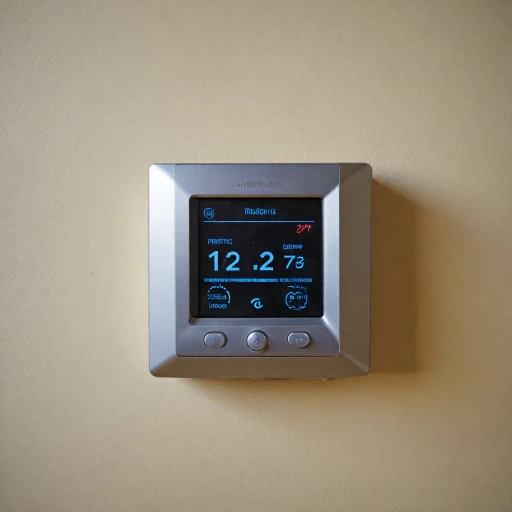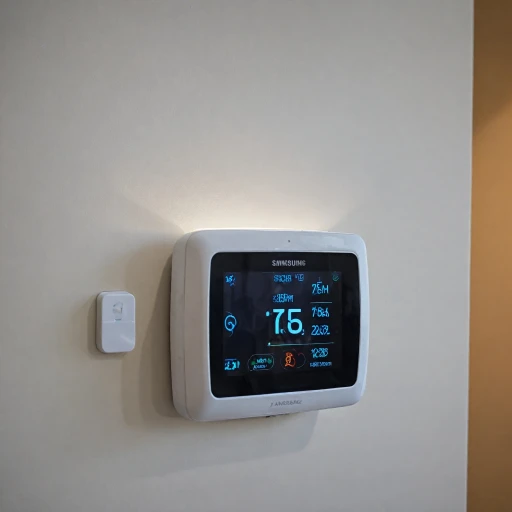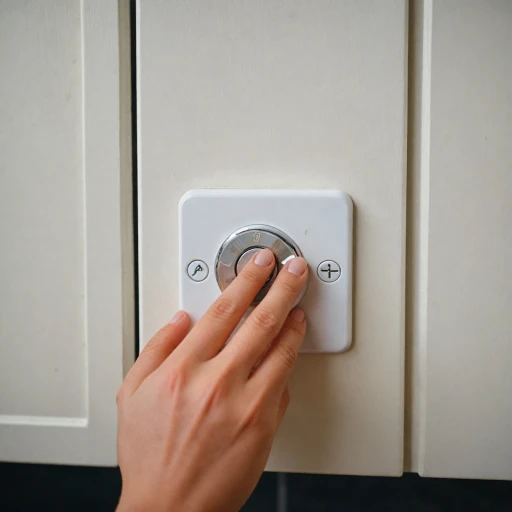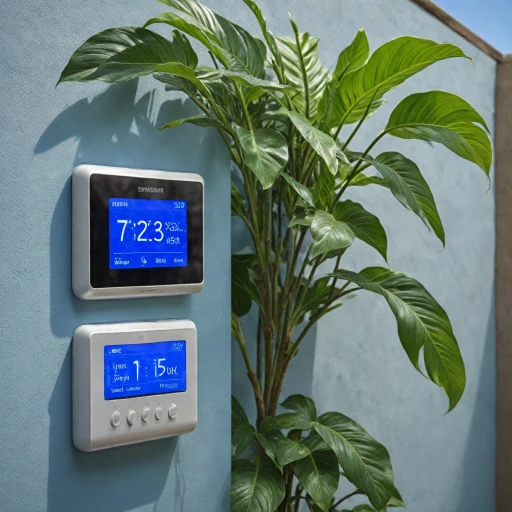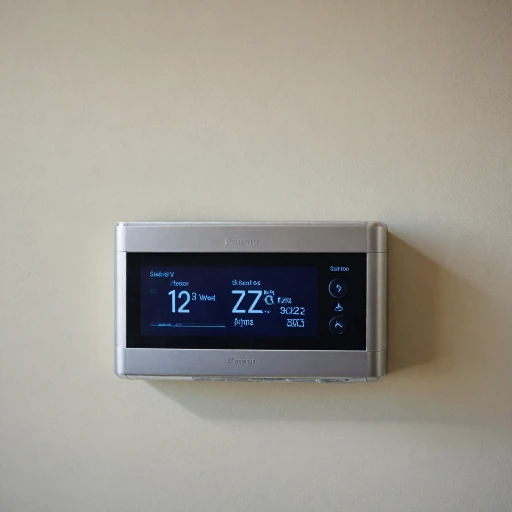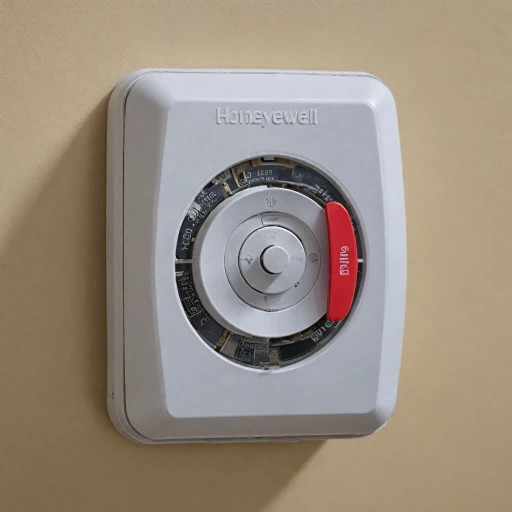
Understanding Smart Thermostats with Wireless Remote Sensors
The Evolution of Smart Thermostats
Smart thermostats have revolutionized the way we manage our home environments. These devices are equipped with advanced features that allow for more precise control over your home's temperature, offering both comfort and energy savings. Among these innovations, thermostats with wireless remote sensors stand out for their ability to monitor and adjust temperatures by accounting for different conditions in various parts of your home.
What Do Wireless Remote Sensors Bring?
When considering a smart thermostat with a wireless remote sensor, you're exploring a product that can detect temperatures in distinct rooms, which helps optimize your overall home environment. This technology is particularly advantageous for homes where some rooms naturally get warmer or cooler than others. Brands like Ecobee and Honeywell smart thermostats offer remote sensors to support this feature. By using these sensors, you're better equipped to thoroughly customize your climate preferences.
The Nest learning thermostat and its equivalents, for example, intelligently adjust to your personal schedule and preferences over time. Meanwhile, products that work with Alexa or Google Nest can integrate effortlessly with your existing home systems, offering voice control and remote access capabilities.
Why Choose a Thermostat with Remote Sensors?
- Even Temperature Distribution: Ideal for multi-story homes where ambient temperatures can differ significantly between floors.
- Precision Control: Seamlessly manages heating and cooling needs based on real-time data collected from different areas.
- Energy Savings: Automatically adjusts settings based on room occupancy and outdoor conditions to save energy.
- Increased Comfort: Ensures personalized comfort by maintaining your preferred temperatures across different rooms.
- Smart Integration: These products often work with Alexa, Google Assistant, and other smart home devices for enhanced control.
For more insights on how to enhance your home comfort, you can explore the possibilities with Sensi room sensors.
How Wireless Remote Sensors Enhance Comfort
Boosting Comfort with Wireless Remote Sensors
Wireless remote sensors in smart thermostats can significantly improve overall comfort levels in your home. By placing these sensors in various rooms, they can accurately detect the temperature and adjust accordingly. This feature is especially beneficial when it comes to ensuring that every room reaches the desired temperature and caters to individual preferences. When considering smart thermostats like Nest Learning or Honeywell Smart, their compatibility with remote sensors means more precise control over heating and cooling. Notably, Ecobee Smart thermostats are recognized for their advanced integration with remote sensors, delivering optimal comfort and energy management. Without remote sensors, thermostats rely on a single point of temperature measurement, usually located in the hallway or a central room. As a result, some areas of your home might be too cold or too warm. With remote access, these smart systems learn from your preferences and adjust, offering a tailored environment. Additionally, integrating remote sensors with voice assistants like Alexa or Google Nest further enhances control. Commands can be issued via Amazon Alexa to set the temperature in specific rooms, making room-by-room management seamless and efficient. This advanced control not only enhances comfort but can also contribute to saving energy and reducing costs. By heating or cooling only the occupied areas, smart thermostats with remote sensors help you save energy and money on your utility bills. To learn more about the technical aspects and benefits of these sensors, explore our detailed insight here. This will give you a better understanding of how these components work with the overall system to boost energy efficiency and ensure optimal comfort.Energy Efficiency and Cost Savings
Maximizing Efficiency and Cutting Costs
Smart thermostats equipped with wireless remote sensors are not just about convenience; they play a crucial role in enhancing energy efficiency and reducing utility bills. By intelligently managing the temperature in your home, these devices ensure that energy is used only when and where it is needed.
One of the standout features of smart thermostats, such as the Nest Learning Thermostat and the Ecobee SmartThermostat, is their ability to learn your schedule and preferences. These thermostats adapt over time, optimizing heating and cooling cycles to minimize energy waste. For instance, they can lower the temperature when you're away or asleep, and adjust it to a comfortable level just before you return home.
Harnessing the Power of Remote Sensors
Remote sensors further enhance this efficiency by providing accurate temperature readings from different rooms. Instead of relying solely on the temperature at the thermostat's location, these sensors allow the system to adjust based on the actual conditions throughout your home. This means no more heating or cooling empty rooms, significantly contributing to energy savings.
Many smart thermostats, like those from Honeywell and Google Nest, are also compatible with voice assistants such as Amazon Alexa and Google Assistant. This integration allows for seamless control and monitoring, ensuring you can make adjustments on the go, further optimizing energy use.
Long-Term Savings and Environmental Impact
Investing in a smart thermostat with remote sensors can lead to substantial long-term savings. According to studies, homeowners can save up to 10-15% on heating and cooling costs. Additionally, by reducing energy consumption, you're contributing to a lower carbon footprint, aligning with environmentally conscious living.
When considering the price of these products, it's essential to weigh the upfront cost against potential savings and environmental benefits. Many smart thermostats come with energy-saving features that earn them high energy star ratings, making them a worthwhile investment for both your wallet and the planet.
Installation and Setup Considerations
Steps for an Effortless Installation and Setup
Embarking on a journey to elevate your home's comfort and energy efficiency with a smart thermostat equipped with wireless remote sensors is a commendable choice. However, ensuring a smooth installation and setup process can make all the difference in your experience.
The first step in setting up a smart thermostat, such as a Google Nest or a Honeywell smart device, involves assessing your current heating and cooling system. Understanding the compatibility with your smart thermostat is crucial. Most modern setups work seamlessly with these devices, but always check the compatibility beforehand.
A few considerations to keep in mind during installation:
- Wiring Requirements: Ensure that you have a working C-wire or common wire. This is essential for powering the device.
- Placement of Sensors: Strategically place your remote sensors in various rooms to achieve balanced temperature control. This ensures optimal performance and accuracy in room temperature adjustments.
- Connection to Network: Upon installation, connecting your thermostat to your home Wi-Fi will unlock its full potential, allowing easy control via apps or voice commands through Amazon Alexa or Google Assistant.
Remember, if you're not comfortable working with electrical systems, it's always advised to consult a professional for assistance, particularly to avoid any mishaps or integration errors with your home’s system.
Setting up a smart thermostat with remote sensors, like the Ecobee smart thermostat or a Nest learning thermostat, can be straightforward, providing the promise of remote access and the ability to control settings from anywhere. By making the right considerations during installation, you'll be poised to take full advantage of the energy-saving benefits these devices offer.
Integration with Smart Home Systems
Seamless Integration with Your Smart Home
Integrating a thermostat with wireless remote sensors into your existing smart home system can significantly enhance the convenience and efficiency of controlling your environment. Many popular smart thermostat models, such as those offered by ecobee, nest, and honeywell, are designed to work harmoniously with other smart devices, making the integration process straightforward. Smart thermostats often come equipped with features that allow them to communicate effectively with voice-activated assistants like Amazon Alexa and Google Nest. This means you can control the temperature settings of your home with simple voice commands, providing an added layer of convenience.Compatible Devices and Platforms
- Amazon Alexa and Google Nest: Most modern smart thermostats, including the ecobee smart and the nest learning thermostat, are compatible with these popular platforms, enabling seamless voice control over your home's climate settings.
- Smart Room Sensors: Some thermostats, like those from ecobee, offer accompanying smart room sensors that can communicate with the main device, providing more precise temperature control and enhancing overall comfort.
Learning Capabilities and Adaptability
Another significant advantage of integrating a smart thermostat with your home system is the learning capability that many of these devices offer. Products such as the nest learning thermostat can adapt to your schedule, learning your preferences over time and adjusting heating and cooling operations to save energy and reduce costs. This adaptability can lead to substantial savings on your energy bills.Customizing Your Smart Home Experience
Beyond basic temperature control, smart thermostats can interact with other smart home components. This interoperability allows you to create various "scenes" or "modes," such as a "night mode" where the temperature is lowered and the lights are dimmed, or an "away mode" that optimizes energy usage when no one is home. In conclusion, choosing the right smart thermostat ensures not only enhanced comfort and significant energy savings but also a seamless integration into your existing smart home ecosystem. Whether you prefer a thermostat that works with Alexa, has remote sensors, or offers bespoke learning capabilities, the options are diverse and suitable for various home setups.Choosing the Right Thermostat for Your Needs
Navigating Your Options When Selecting a Smart Thermostat
Choosing the right smart thermostat is crucial for enhancing your home's comfort and efficiency. With a plethora of options available, it's essential to identify the features that best suit your needs.- Compatibility with Your System: Ensure the thermostat you select is compatible with your existing heating and cooling system. Compatibility varies among smart thermostats like Ecobee, Nest, and Honeywell, so it's important to verify before purchasing.
- Remote Sensors: Different models offer varying capabilities when it comes to remote sensors. These sensors, seen in thermostats like Ecobee, help balance temperature and energy use across rooms. Consider a thermostat with these sensors if you have diverse temperature needs in your home.
- Smart Features: Look for features that complement your lifestyle. Many smart thermostats offer control through Amazon Alexa or Google Assistant, providing hands-free temperature adjustments. The level of integration with other smart home systems, like smart lighting or security, can also influence your decision.
- Energy and Cost Savings: Consider a learning thermostat which adapts to your routine to optimize energy usage. Check if the device has received good reviews for energy savings, such as star ratings on Amazon, and examine your potential long-term savings.
- User Interface: The ease of use is crucial. A user-friendly interface both on the device and via apps or remote access can greatly enhance your experience with the product.
- Budget Considerations: Prices can significantly vary between models. Weigh the cost against the benefits such as remote sensors or learning capabilities. A higher initial price might lead to greater energy savings and comfort over time.

